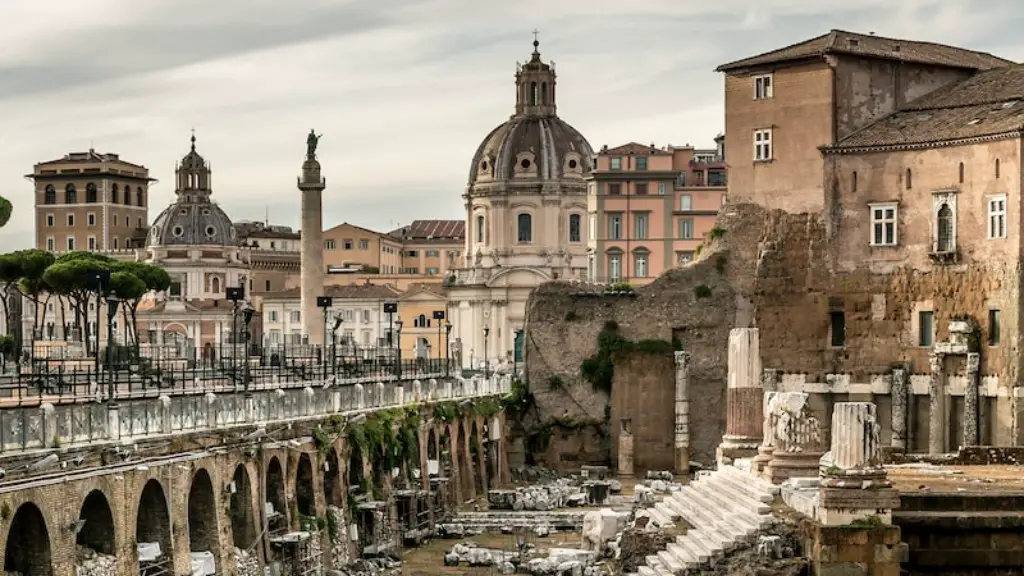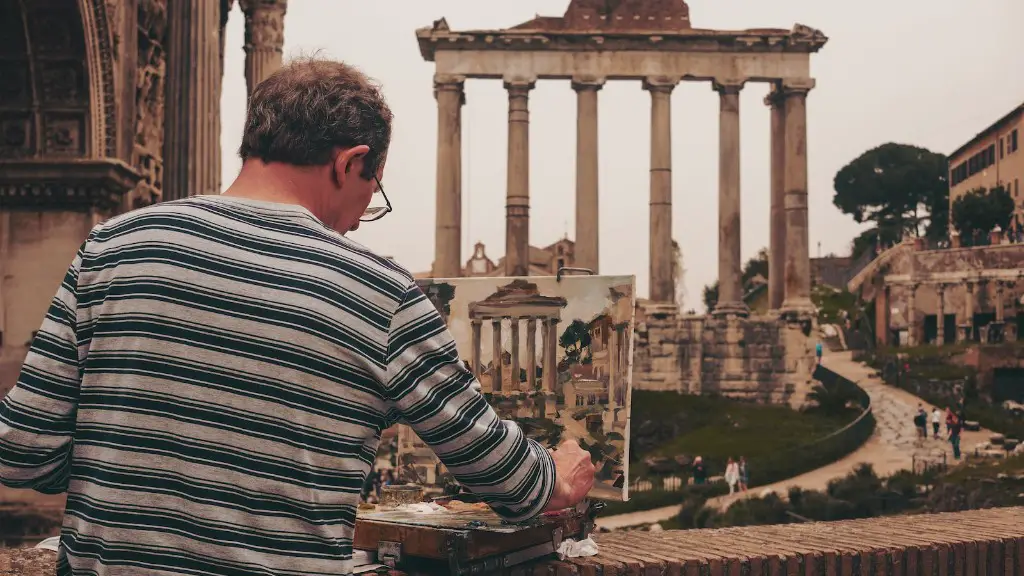Hairstyles in Ancient Rome
Ancient Rome is remembered for its countless artistic and architectural feats, but what about its hair? Through exploring art, literature, and archaeological finds, it is possible to piece together the popular hairstyles of the era.
In classical Roman sculptures and frescos, many of the hairstyles feature intricately styled up-dos. Women were seen adorning elaborate braids, curls, and plaits, often finished with intertwined ribbons or floral decorations. Frequently, Roman women also wore their tresses almost shoulder-length.
Men often favoured shorter hairstyles, with some maintaining completely shaven heads. Amongst those with hair, military-style buzzcuts, slicked-back do’s and even simple long side-parts were common.
Some traditional Roman hairstyles were unique identifiers, depending on marital and social status. For example, married matrons who had taken a vow of chastity would often part their hair in the middle and fasten it back into a chignon. Widows, who in Ancient Rome had to maintain their ‘mourning look’ for two years, were encouraged to wear particularly long locks, finishied with a band of black cloth around the forehead.
In addition to conveying social standing and sentimentality, hairstyles in Ancient Rome were seen as an overall expression of fashion and vanity. Plebeian women, in particular, were renowned for their sometimes eccentric displays of grooming. One Roman author, Plutarch, noted that some hairstyles became synonymous with particular professions. For example, the flute-players would often arrange their tresses in an elaborate knot on top of their heads.
Ancient Roman’s had a range of tools and products to achieve their desired looks. Mirrors, combs, hair-pins, and small scissors were all founded during excavations of Roman villas. Furthermore, it is reported that some women bleached their tresses with nitre, a chemical element found in urine.
Overall, hairstyles in Ancient Rome was a way to show personality and self-expression. From military-style buzzcuts to elaborate up-dos, Ancient Rome had a range of glamorous yet wearable hairstyles.
Hair accessories in ancient Rome
In addition to hairstyling, wearing accessories were a popular way to decorate hair among Roman women of all social classes. Since the Roman era, during excavations, many clips, pins and barrettes have been found which suggest the extent of adornment.
For formal occasions, such as marriage ceremonies, women adorned themselves with elaborately crafted hairpieces. In lieu of flowers and ribbons, wealthy matrons often wore jewelled combs and broches, with some even almost resembling a tiara.
Roman women also used perfumes and scents to enhance their hairstyles. According to Pliny the Elder, several expensive fragrances were popular amongst ladies, which were sometimes diluted with rose-water (boro) and applied to the head.
In addition, Ancient Roman women commonly favoured a variety of wreaths and garlands, made out of fabrics such as velvet, cotton and linen. In particularly, rose-petal wreaths were especially popular, which were associated with love, marriage and victory.
However, hair adornment was not exclusive to women. Some depictions of Ancient Roman men show that during certain feasts, men would occasionally wear ribbons around their hair or on the back of their necks. Additionally, funerary statues, crafted in honour of deceased warrior deities, sometimes feature intricate headgear.
The negative effects of hairstyles in Ancient Rome
Just asAncient Rome had elaborate hair care practices and styling, they also had extreme means of body modification. It is known that Romans sometimes indulged in unsafe practices to alter or completely remove their hair.
For instance, ‘plucking’ was a technique used to remove unwanted body and facial hair, with the assistance of tweezers and burned-out linen thread. This practice was potentially highly damaging and could leave the skin prone to infection.
In addition, ancient Roman women were often overly reliant on dyes and bleaches to achieve a certain desired look. This was arguably an even more dangerous course, as the harsh chemicals frequently caused skin irritation. For example, an ancient Roman author, Pliny, warned about the use of ‘yellow powder’ used to lighten hair, which he claimed to be poisonous and cause blindness.
Overall, it is safe to say that hair and body modifications in Ancient Rome contained risks which far outweighed their beauty benefits.
The influence of hairstyles in Ancient Rome
As one of the earliest and most influential civilizations, Ancient Rome has continued to have an influence on hair and beauty trends even up to the modern era. Various ‘classical’ hairstyles have been adapted and popularised, particularly by Hollywood stars and fashion elites. Slicked-back up-dos and simple side parts are amongst the most commonly seen styles today, along with intricate braids.
Moreover, Ancient Rome has also left its mark on modern makeup. In particular, kohl eyeliner, which was used to frame Roman women’s eyes, is seen as a staple in many beauty routines today. Additionally, hennas, gums, and essences which were used to colour and decorate hair in the past are still seen in many modern salons.
Beyond beauty trends, the aesthetic of Ancient Rome also continues to be preserved by artists, designers, and organisations. It is not uncommon to see games, television shows, and movies recreated with ‘classical’ hair and makeup, as a tool to transport reminiscences back to an almost living past.
Hairdressers in ancient Rome
In Ancient Rome, skilled hairdressers or ‘tonstoriae’ were employed to serve their wealthy clientele and create elaborate hairstyles. However, the profession of hairdressing was not exclusive to the upper classes and slightly auxillary roles were also observed in the market.
Typically, a tonstoria would be responsible for keeping up with the most recent fashion trends and connecting with their clients on a more personal level. Additionally, they were expected to be knowledgeable about skincare and well-versed in the use of cosmetics and styling products.
Interestingly, it is reported that a tonstoria would sometimes act as a diplomat, passing messages between two people or families. For example, during times of political conflict, a servant could use the hairdresser visit as an excuse to send covert messages between the two households.
In some cases, men and women tonstoriae were hired to create particularly elaborate hairstyles for special occasions. Meanwhile, households of higher statuses would have their own dedicated hairdressrers as a permanent resident, along with a number of other servants.
Styling tools used in Ancient Rome
Just as today, it takes various tools and products to style hair. Many of the tools and products used in Ancient Rome are still available or adapted today.
Mirrors and combs were a common household item in Ancient Rome, used to part and style tresses. Aside from hot irons, women would use beeswax and vegetable gum to hold braids in place. In most cases, pigtail-like braids, curled strands, and twirled fringes were amongst the more popular styles.
Furthermore, Ancient Romans had their own shower-like contraption called a ‘drwo’. The drow was a basalt vessel inside which a fire was placed and feeding the stones warmed water. This way, Roman women would heat up their water for washing and conditioning hair.
Finally, bleaches and dyes were found in almost every household. For example, a common bleaching ingredient was nitre, a chemical element found in urine. Ancient Romans would sometimes boil nitre with potash and shape it into cakes to be rubbed onto the hair.
In conclusion, it is fair to say that Ancient Rome had a range of tools and products used to create and maintain their desired hairstyles and looks.





